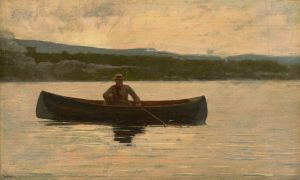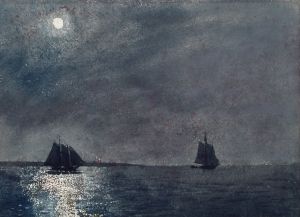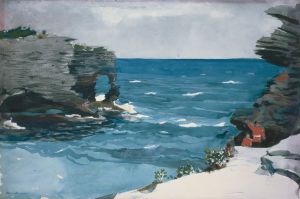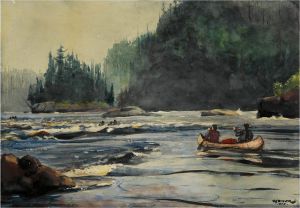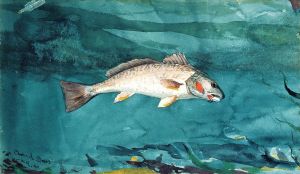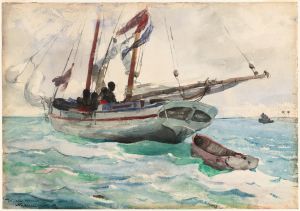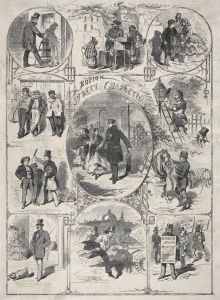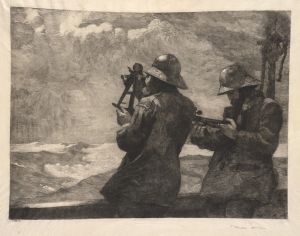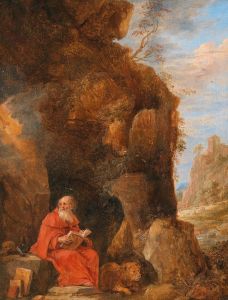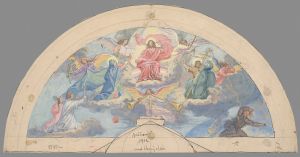
Tenth Commandment
A hand-painted replica of Winslow Homer’s masterpiece Tenth Commandment, meticulously crafted by professional artists to capture the true essence of the original. Each piece is created with museum-quality canvas and rare mineral pigments, carefully painted by experienced artists with delicate brushstrokes and rich, layered colors to perfectly recreate the texture of the original artwork. Unlike machine-printed reproductions, this hand-painted version brings the painting to life, infused with the artist’s emotions and skill in every stroke. Whether for personal collection or home decoration, it instantly elevates the artistic atmosphere of any space.
Winslow Homer, an American artist renowned for his landscape and marine subjects, does not have a widely recognized painting titled "Tenth Commandment." It is possible that there may be some confusion or misattribution regarding this title. Winslow Homer (1836–1910) is best known for his works that capture the American experience, particularly during and after the Civil War, and his later seascapes depicting the rugged coastlines of New England.
Homer began his career as a commercial illustrator and gained recognition for his work as a magazine illustrator during the Civil War. His early paintings often depicted scenes of everyday life and the American landscape, reflecting the social and cultural changes of the time. After the war, Homer traveled to Europe, where he was influenced by the work of French artists and began to develop his distinctive style.
One of Homer's most famous works is "The Gulf Stream" (1899), which portrays a lone man adrift on a small boat surrounded by sharks, symbolizing the struggle against nature and the unpredictability of life. Another significant painting is "Snap the Whip" (1872), capturing the innocence and energy of rural American children playing a game in a field.
Homer's later works, particularly those created in the 1880s and 1890s, are celebrated for their dramatic depictions of the sea and the human relationship with nature. Paintings such as "Breezing Up (A Fair Wind)" (1873–1876) and "The Fog Warning" (1885) showcase his mastery of capturing the dynamic and often perilous nature of the ocean.
Throughout his career, Homer was known for his ability to convey emotion and narrative through his use of color, composition, and light. His works are characterized by their realism and attention to detail, as well as their exploration of themes such as survival, resilience, and the human condition.
While there is no specific record of a painting titled "Tenth Commandment" by Winslow Homer, his body of work remains influential and continues to be studied and admired for its contribution to American art. Homer's legacy is preserved in major art institutions, including the Metropolitan Museum of Art in New York and the National Gallery of Art in Washington, D.C., where many of his paintings are on display.
If there is a specific painting or artwork by Homer that you are interested in, it may be helpful to verify the title or provide additional context to ensure accurate information.






